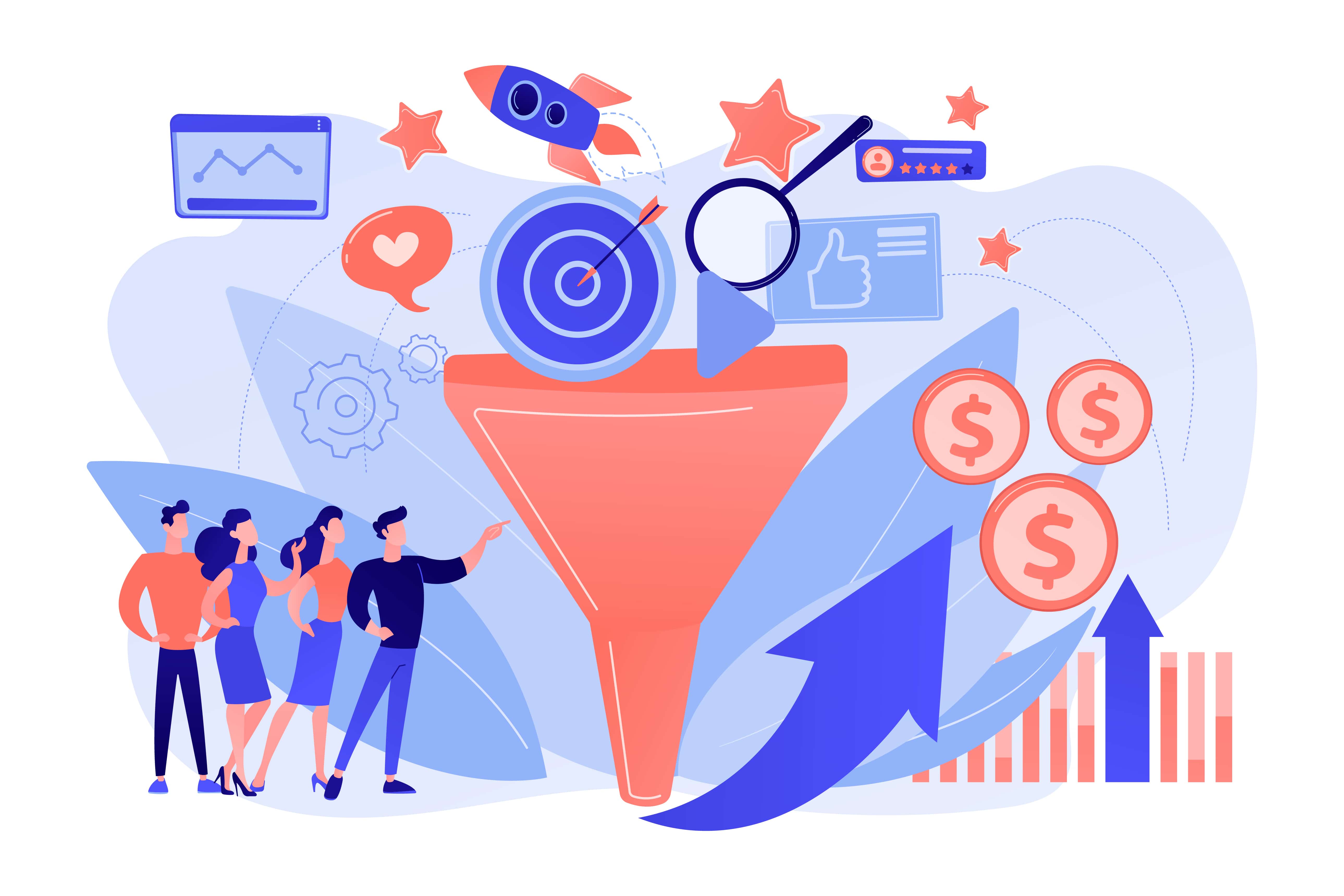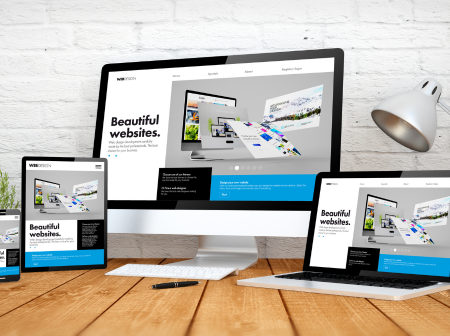Whether you run a small or Fortune 500 business, SEO significantly impacts your company's success. Your SEO strategy will determine how easy it is for your target customers to find you. That is no simple task, given that 75% of internet users never even scroll past the first page of search results.
Top 10 SEO Tips to Boost Your Organic Rankings & Traffic
To help you get your website in front of potential customers, here are 10 Straightforward SEO tips and techniques:
- Target relevant primary and secondary keywords.
- Write quality original content.
- Work on optimizing your page title and meta description.
- Use brief, informative URLs.
- Use a combination of internal and external links.
- Optimize your graphics.
- Format Your Content for Search Engines & Target Featured Snippets.
- Study your competitors.
- Conduct regular site audits.
- Continue learning about SEO
- Target relevant primary and secondary keywords:
Researching keywords is the basis of any SEO strategy that works. By mastering keywords, you can produce content that increases traffic to your website.
- The first step is to identify your page's primary and secondary keywords.
- Your primary keyword is the focus of the majority of your content. There should only be one main keyword per page. It should be relevant to your page's subject matter, brand identity, products, and services.
- Your auxiliary keywords support the main idea. You might have a lot of these. They represent the subtopics you'll cover in your article. If they don't fit, incorporate them naturally into your content.
- Write quality original content:
- Everyone wants visitors to find and return to their website and so do you. Hence, your website should have high-quality content that is distinctive, comprehensive, useful, and remains evergreen.
- You can connect with your audience by showcasing your unique expertise and perspective through original content.
- Additionally, Google's algorithms help in finding original content. Effective SEO strategies and distributing trustworthy original content will likely increase search volume.
- Ideally, your content should be in-depth. That suggests that the data you disseminate covers every aspect of a user's interest in learning about the subject. Search engines can see that you have a lot of pages and are an expert on the subject.
- Not to mention, evergreen content has long-term value, will always be relevant, and will increase traffic.
- Inbound marketing is the gift that keeps on giving. The reason behind saying this is; inbound marketing continues to produce results even when your focus is elsewhere.
- When creating evergreen content, consider the topics that will continue to apply to your readers over time without needing major updates.
- Try to stay away from time-sensitive data stories, breaking news, and seasonal topics. These pages are not likely to remain relevant over time.
- Work on optimizing your page title and meta description:
Your page title and meta description might be immediately visible to your audience. These alone may impact users' decisions to scroll or click on your page. Use your words wisely because they have a powerful impact when said briefly. Also, even you will agree with the fact that short texts with clear meanings are way better than confusing long texts.
The platform you use to host your website typically offers a straightforward method of editing the meta description and page title. For instance, WordPress provides two boxes for the "meta description" and "SEO title."
The following points should be remembered:
- Make sure your page title length does not exceed 30–60 characters.
- Additionally, your meta description should contain a maximum of 160 characters.
- Put in your desired keyword here.
- Describe your page's goals and unique features.
- Make sure the title and meta description are distinct for every page.
- Use brief, informative URLs:
A relatively small amount of work on improving your URL structure can significantly impact your on-page SEO. A precise URL can help search engines understand your page and help you appear more user-friendly in the SERPs.
The best part is that even SEO beginners can handle it.
An effective URL should:
- Use keywords: Make an effort to use your primary keyword.
- Be readable: After reading the URL, a visitor should be able to ascertain the page's goal quickly.
- Keep your URLs brief (60 characters or less); this is preferred. This is because many search engines have trouble processing longer URLs. This can directly hurt your ranking.
- Use a combination of internal and external links:
- Effective use of internal and external links can enhance the user experience, credibility, and Google’s ability to crawl. Ensure that these links redirect the user to practical, relevant information.
- Internal links on your website point users to other pages. They entice users to stay on your website longer and make it easier for search engine crawlers to find your content.
- You could link between related blog posts to assist your audience in finding more resources on a topic they are researching without ever leaving your website.
- External links are those that direct users to other websites. These can be used as links to websites that provide reliable, excellent content related to the topic of your article.
- Be cautious when incorporating external links because doing so could tarnish your reputation if you point to low-quality material.
- Optimize your graphics:
A striking image or graphic successfully conveys the essence of a subject and is challenging to ignore. Make sure the images you create for your website are optimized. Listed below are some things that should be taken into consideration.
- Size and Formatting: Choose the image size and file format most applicable to your audience. If an image is too large, your page might load more slowly. The image might not load if the file type is not supported.
- Accessibility: Ensure each image has a clear alt text for accessibility purposes. This improves the usability of your website for screen readers and allows you to use more supporting keywords. Do not embed essential text elements in your images if you have another way to access them.
- Context: Give your images context by positioning them next to the relevant text on your page. Put your most important image as close to the page's top as possible.
- Links: Give each of your images a name that makes sense and logical URLs. This facilitates sharing your images on other websites, which could lead to backlinks for you in addition to helping with organic search optimization.
- Test: Remember to check your pages on desktop and mobile. Optimizing your images for mobile could have added advantages because users frequently search Google Images from mobile devices rather than desktops.
- Format Your Content for Search Engines & Target Featured Snippets:
- Make sure you respond to your audience's queries if you want your written content to be effective.
- A simple way to achieve the same is to target featured snippets.
- The search engine result page of Google displays featured snippets at the top. This answers the user's query without redirecting them to another page.
- They are apparent, beneficial, and more likely to draw organic traffic because they are displayed before numbered results.
- Featured snippets are often referred to as SERP features.
Digital marketers highly seek these jobs. To win one, you must target them with your content optimization. Even if you don't get the desired snippet, the tactics you use to target featured snippets can increase the reader value of your content and boost your SEO.
- Study Your Competitors
- You and your most significant competitors produce comparable content and aim for the same audience.
- You can discover more about powerful content distribution channels or develop fresh ideas for your content by looking at your rivals' websites.
- Identify your main competitors first. You can keep tabs on essential players in your niche and how much traffic they bring.
- Conduct regular site audits:
- You can ensure your website remains functional and user-friendly by regularly auditing it.
- Additionally, it's a great way to discover issues you might have missed, like slow page loads, orphaned pages, broken links, or other problems.
- When that occurs, you can prioritize and attend to them before they significantly impact them.
Starting now:
- Create a brand-new project for your website.
- List your page source and the number of pages you want to crawl.
- Specify any additional conditions, such as crawler settings, prohibited URLs, or URL parameters.
- Prepare for or begin your site audit.
- Continue Learning About SEO
- Every digital marketer knows that Google's algorithm is constantly changing and causing the digital environment to change. It's essential to stay informed about SEO if you want to keep winning.
- Thanks to blogs, ebooks, podcasts, videos, webinars, and other resources, you have much information at your disposal.
- Listed below are a few suggestions from our blog:
- How to create an SEO roadmap that drives revenue.
- The ultimate guide to backlink building.
- What Is Off-Page SEO? A Guide to Off-Page SEO Strategy.
- On-page SEO- All About It.
- How to Perform Technical SEO Audits: A Complete Guide.
- How to Perform On-page SEO Audits: A Complete Guide.
Please visit our blog section for more SEO-related blogs and other digital marketing dimensions.











